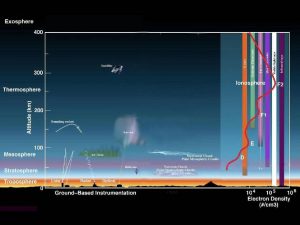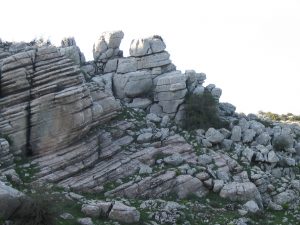September 24, 2017
Revised: October 14, 2017
Author: Kiara Grant
Pollution in China might be contributing to ozone levels over the western United States, according to an article recently published in Nature Geoscience. The article detailed the findings of a research group at the Royal Meteorological Institute of Belgium, which analyzed data from a NASA satellite called Aura. Aura measured concentrations of ozone, and its precursors in the atmosphere, specifically in two layers of the atmosphere, called the stratosphere and the troposphere.
Tracking the level of ozone in the troposphere is important because, while in the stratosphere ozone protects the planet from UV radiation, just below, in the free troposphere, it acts as a greenhouse gas, contributing to global warming. Furthermore, in the lower troposphere it can have negative health effects on plant and animal life. Ozone pollution is known to aggravate conditions like asthma and chronic obstructive pulmonary disease (COPD) and can even impair lung development in children.

Diagram of the layers of Earth’s atmosphere Credit: NASA/Goddard
The authors of the study broke down the causes of the observed changes in ozone into three categories: emissions, transport, and stratosphere-troposphere exchange. Emissions refers to emissions of nitrogen oxides caused by human activity. Nitrogen oxides are a class of chemicals which, as their name would imply, are made up of nitrogen and oxygen atoms. The term nitrogen oxides is used primarily to refer to NO and NO2 gas. In the troposphere, these gases are precursors to ozone. Transport refers to the long-range transport of ozone, by air currents. Finally, stratosphere-troposphere exchange refers to the natural exchange of ozone from the stratosphere to the troposphere.
The major finding of the Royal Meteorological Institute of Belgium’s study was that significant quantities of ozone travelled from China to the western United States, and that this transport greatly offset the reduction in free-tropospheric ozone which was expected in that area. Between 2005 and 2010, there was an estimated 21% decrease in nitrogen oxide emissions over the Western US. This was thanks to changes in federal, state and local air quality policies. However, approximately 43% of the expected ozone reduction in the Western US between 2005 and 2010 was completely offset by inflow of ozone from China, where tropospheric ozone increased by nearly 7% in that same time period.

This map shows the longwave radiative effect of infrared radiation absorbed by tropospheric ozone as estimated from top-of-atmosphere observations.
Credit: NASA/Goddard
The authors of the study concluded that “air quality and regional climate change mitigation policies could eventually have limited impact if not considered in a global context.” Despite the present need for global cooperation to face the threat of climate change, recent events, such as Donald Trump’s announcement that the US will withdraw from the Paris climate accord, have some worried that international alliances are weakening. This study is a clear reminder that when facing global problems, individual nation’s actions have international impact.

